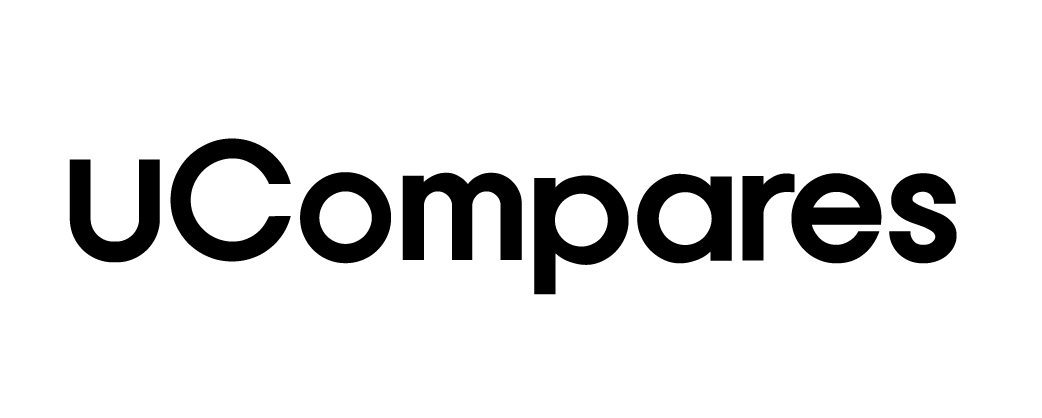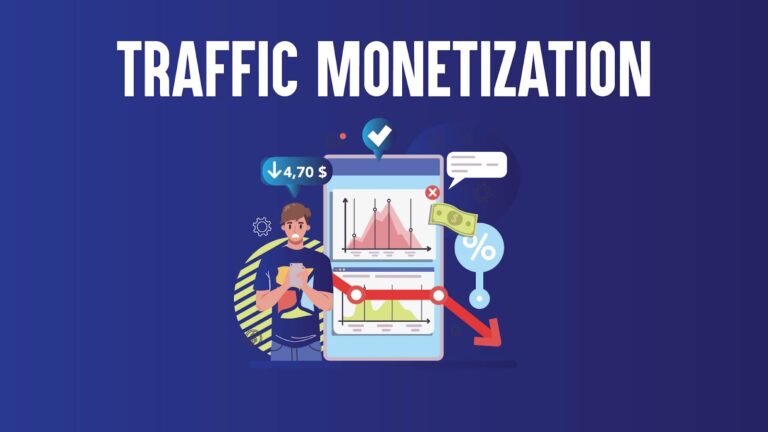Traffic Monetization:
Do you have a website or blog and are looking to make money from it? If yes, then understanding traffic monetization is essential for you. Whether you’re just starting or have been running your site for years, knowing how to monetize your traffic can make a significant difference in your earnings. But what exactly is traffic monetization, and how does it work?
Creating a website or blog often takes a lot of effort. After you’ve poured time and resources into building it, the next step is to figure out how to generate income from the traffic it receives. Earning money from a website may seem challenging, but once you grasp the strategies for traffic monetization, it becomes a straightforward process.
The key is to find the perfect balance between offering quality content and introducing monetization strategies. This ensures your visitors stay engaged with your site while also providing opportunities for you to earn money. If done right, monetizing traffic can become an ongoing source of revenue.
What is Website Monetization?
Website monetization refers to the process of turning your website’s traffic into income. It involves leveraging different techniques such as pay-per-click (PPC), cost-per-impression (CPI/CPM), affiliate marketing, sponsored content, and more to generate revenue from your website.
Many website owners start with basic advertising strategies, such as displaying ads on their site through ad networks like Google AdSense. These ad networks allow website owners to place relevant ads on their pages, and in return, they earn money based on the traffic their site receives.
As your site grows in traffic and influence, you can explore other more advanced monetization methods to diversify your income streams.
Why is Traffic Monetization Important for Your Website?
Why should you consider traffic monetization for your website? Here are some solid reasons:
1. Increases Revenue Potential:
The primary reason to monetize your website traffic is to make money. Website monetization offers several ways to turn your hard work into cash. You can start small with platforms like Google AdSense and grow your income over time by expanding into affiliate marketing, sponsored content, and other strategies.
The amount of revenue you generate will depend largely on how much traffic your website gets. High-traffic websites have more potential to earn significant income through various monetization methods. Whether you’re looking to earn a part-time side income or turn your website into a full-time job, traffic monetization is key.
2. Provides Passive Income:
Once your monetization strategy is set up, your website can generate passive income. For example, with PPC ads, every time a visitor clicks an ad, you earn money. Once these ads are in place, they require little to no maintenance, and your earnings continue as long as visitors interact with the ads.
Similarly, affiliate marketing or sponsored content can provide ongoing revenue streams with minimal upkeep, allowing you to make money while you sleep.
3. Helps Monetize Your Blog:
Blogging is one of the best platforms for monetization. If your blog gets consistent traffic, you can easily make money from a single post by implementing affiliate links, sponsored content, or even selling your own products. Many bloggers have turned their blogs into full-time income sources using these strategies.
The beauty of blog monetization is that it doesn’t stop with just ads. You can also explore other avenues like product recommendations, email marketing campaigns, and membership programs to boost your revenue.
4. Opens Up Multiple Opportunities:
Website monetization offers various ways to earn. Depending on your niche and content type, you can choose strategies that align with your audience’s interests. For example, if you’re a fashion blogger, you might want to collaborate with clothing brands for sponsored content or sell ad space to retailers.
In contrast, a website offering digital marketing tips might monetize through affiliate marketing by promoting SEO tools or courses. The key is to choose monetization methods that resonate with your audience and add value to their experience.
How Does Traffic Monetization Work?
At its core, traffic monetization is the process of converting your site’s visitors into revenue. The more visitors you have, the more money you can make. But it’s not just about having high traffic; you need to know how to optimize that traffic for earnings.
Most monetization strategies depend on the volume of traffic your website receives. Whether you’re using PPC ads, affiliate marketing, or selling your own products, traffic is the driving force behind your potential earnings.
Once your site reaches a certain level of daily visitors, you can start monetizing through different methods. Here’s how:
1. Pay-Per-Click (PPC) Ads:
One of the easiest ways to start monetizing your website is through PPC ads. When visitors click on these ads, you get paid for each click. Google AdSense is the most popular platform for PPC ads. You can easily sign up for AdSense and start displaying ads on your website with minimal effort.
The amount of money you make depends on your niche, traffic volume, and the quality of your audience. Some niches, like finance and health, tend to have higher-paying ads compared to others.
2. Cost-Per-Impression (CPM) Ads:
Another popular monetization method is CPM ads, where you get paid based on the number of impressions (or views) your ads receive. Unlike PPC ads, CPM ads pay you for every 1,000 impressions your ads get, regardless of whether visitors click on them.
This is a great option for websites with high traffic volumes, as even if your visitors aren’t clicking on ads, you can still earn a decent income.
3. Affiliate Marketing:
If you’re good at reviewing products or recommending services, affiliate marketing is one of the most profitable ways to monetize your traffic. You earn a commission every time someone buys a product through your affiliate link.
Affiliate marketing works best when you have an engaged audience who trusts your recommendations. By promoting products relevant to your niche, you can make significant earnings from each sale.
4. Sponsored Content:
Sponsored content is another effective way to monetize your site. Brands will pay you to create content that promotes their products or services. This can take the form of blog posts, videos, or even social media posts.
The amount you can charge for sponsored content depends on the size of your audience, the quality of your content, and the influence your site holds in your niche.
5. Selling Ad Space:
For websites with consistent traffic, selling ad space can be a lucrative option. You can sell banner ads, pop-ups, or sidebar ads to businesses looking to reach your audience. This gives you control over pricing and ad placements.
However, selling ad space requires a steady flow of traffic and good conversion rates to attract advertisers.
6. Accepting Donations:
If you have a loyal following but don’t want to clutter your site with ads, you can accept donations from your visitors. Many creators use platforms like PayPal or Patreon to receive contributions from their audience. While this may not generate a lot of income, it’s a good way to cover basic expenses like hosting and domain fees.
Is Your Website Ready for Monetization?
Before you jump into traffic monetization, you need to assess whether your website is ready. The most important factor to consider is your website’s traffic. The more visitors you have, the higher your chances of earning significant income.
That said, even smaller websites with lower traffic can still make money through niche-specific monetization strategies. The key is to focus on increasing your traffic, attracting a targeted audience, and keeping them engaged.
Here are a few signs your site is ready for monetization:
- You have a consistent flow of traffic.
- Your visitors stay on your site and engage with your content.
- You’re regularly publishing high-quality content.
- You’ve built a loyal following in your niche.
If you meet these criteria, it’s time to start exploring traffic monetization strategies.
A Comprehensive Guide to Website Monetization Strategies
Now, let’s dive into some specific website monetization strategies and how you can use them to maximize your earnings.
1. Google AdSense for Pay-Per-Click (PPC) Advertising
Google AdSense is the go-to choice for most website owners when it comes to PPC advertising. Every time someone clicks on one of the ads displayed on your site, you earn money. It’s incredibly easy to set up, and AdSense works with almost any website.
The best part is, once the ads are in place, you don’t have to worry about managing them. AdSense handles everything for you, from displaying relevant ads to calculating your earnings.
2. Affiliate Marketing
Affiliate marketing is a great way to monetize your blog if you’re passionate about certain products or services. By partnering with affiliate programs, you can promote these products to your audience and earn commissions for every sale made through your referral links.
Many affiliate programs pay a percentage of the sale price, so your earnings will depend on the price of the products you promote. Websites like Wirecutter and Smart Passive Income have made affiliate marketing one of their main income sources.
3. Sponsored Content
With sponsored content, you collaborate with brands to create promotional material for their products or services. Brands will pay you to write reviews, create videos, or feature their products in your blog posts.
This strategy works best if your website has a strong following and attracts a targeted audience that matches the brand’s customer base.
4. Selling Ad Space
Selling ad space on your website allows you to take full control of the ads displayed on your site. You can negotiate prices with advertisers and choose where the ads will appear. Banner ads, pop-up ads, and sidebar ads are common placements for this monetization strategy.
However, selling ad space directly to businesses requires you to have a steady flow of traffic and a high conversion rate to attract advertisers.
5. Accepting Donations
If you have a tight-knit community that values your content, you can ask your visitors for donations. Platforms like PayPal offer donation buttons that can be easily added to your website. Although donations won’t replace a full-time income, they can help cover the costs of running your website.
Final Words:
This guide provides a complete breakdown of traffic monetization strategies that can help you turn your website traffic into revenue. Whether you’re just starting or looking to expand your monetization efforts, these tips will put you on the right track for success.
FAQs on Traffic Monetization:
What is traffic monetization?
Traffic monetization is the process of turning your website’s traffic into income by using strategies such as displaying ads, affiliate marketing, and sponsored content.
How much traffic do I need to make money from Google AdSense?
The amount of traffic you need depends on your niche and the value of the ads. To make around $100 per day, you typically need at least 10,000 visitors daily with a good RPM (Revenue per Mille, or revenue per 1,000 impressions).
Can I buy website traffic to increase my earnings?
Yes, paid traffic can help grow your audience and boost your earnings. However, it’s important to target the right audience and ensure your content is valuable, or your investment may not pay off.
How do I get started with affiliate marketing?
To start affiliate marketing, you’ll need to join affiliate programs that align with your website’s niche. You’ll then promote products using your unique affiliate links, earning a commission for each sale made through those links.
Does accepting donations hurt my website’s image?
Accepting donations does not negatively affect your website’s image, as long as it’s done transparently. Many creators use platforms like PayPal or Patreon to receive contributions from their community.



